Wind Noise/Road Noise Diagnostic Information

| Subject: | Wind Noise/Road Noise Diagnostic Information |
| Models: | 2005-2009 Buick Allure (Canada), LaCrosse |
| 2006-2009 Chevrolet Impala |
This bulletin is being revised to add the 2009 model year. Please discard Corporate Bulletin Number 08-08-58-002 (Section 08 - Body and Accessories).
Impala Wind Noise/Road Noise Conditions
Condition #1
Wind rush around the door appliques.
Cause
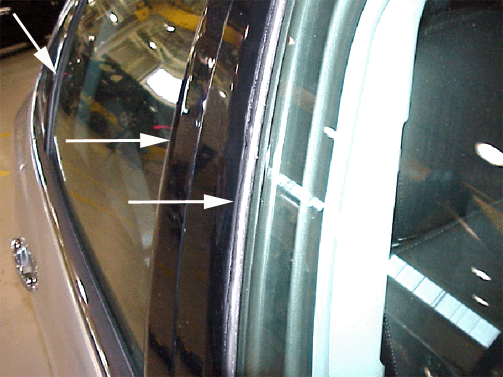
The door applique may not be completely seated. The leading edge of the applique should not gap to the glass run channel seal.
Correction
Press on the applique in three locations (top, middle, bottom). There should be no click sounds. A click indicates that the tab on the applique was not fully seated into the clip on the reveal molding.
Condition #2
Wind rush around the outer belt molding.
Cause

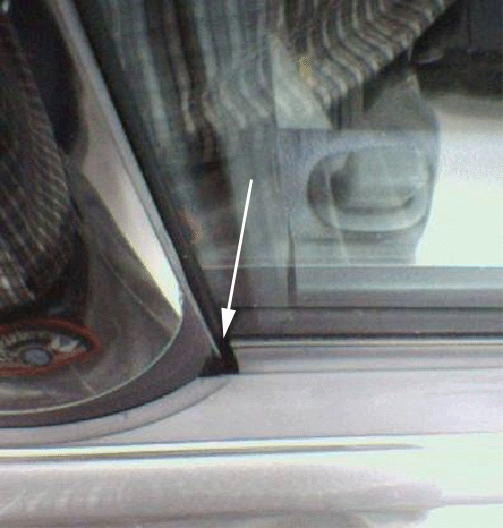
The molding may be installed too far forward or too far rearward.
Correction
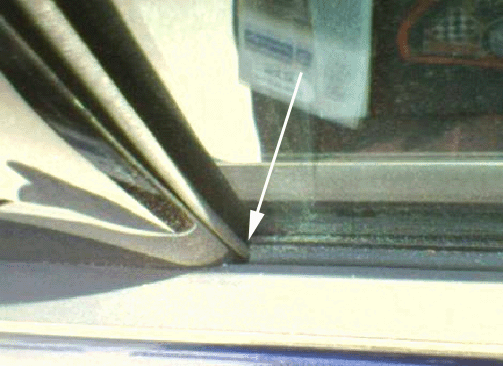
Loosen the screws at ends of the molding. Reposition the molding and tighten the screws.
Condition #3
Road noise or wind noise around the inner belt seal.
Cause
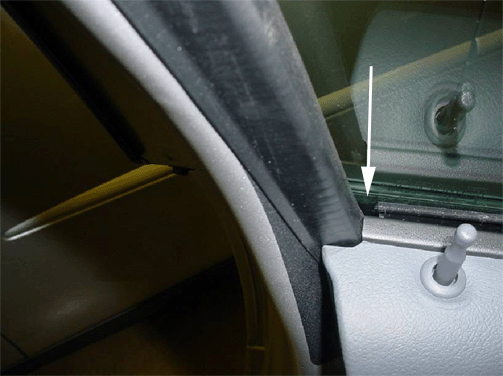
The inner belt seal may be installed too far forward or too far rearward. There should be no gap or hole between the run channel and the inner belt seal.
Correction
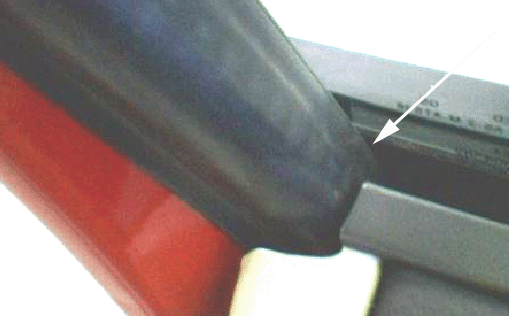
Remove the door trim panel and reposition the inner belt seal as necessary.
Condition #4
Wind noise or road noise around the mirror patch.
Cause
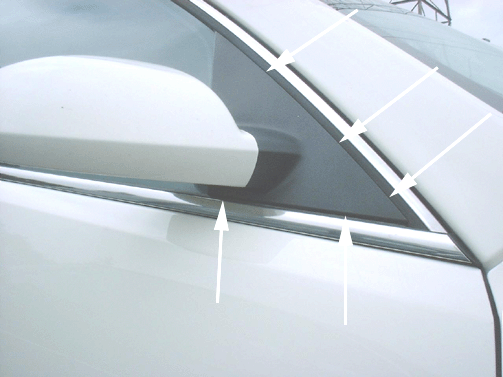
There should not be a gap over 0.5 mm (0.020 in) at the bottom of the mirror patch bezel. The gap at the top of the mirror patch should be 0.25 mm (0.010 in) or less.
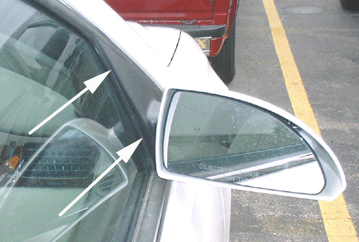
Make sure the gap at the rear portion of the mirror patch does not exceed 0.25 mm (0.010 in).
Correction
Loosen the nuts for mirror. Make sure the mirror patch is forward and low. Hold mirror at the top corner while tightening nuts to fully seat the top corner of mirror first.
Condition #5
Wind noise from the sunroof.
Cause
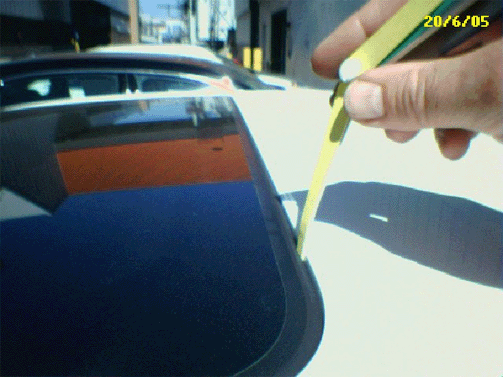
Make sure there is not a gap over 0.5 mm (0.020 in) between the sunroof glass seal and the metal roof.
Correction
Loosen the four sunroof glass attaching screws and adjust the sunroof glass for proper contact all the way around the sunroof glass.
Condition #6
Wind rush from the front door.
Cause
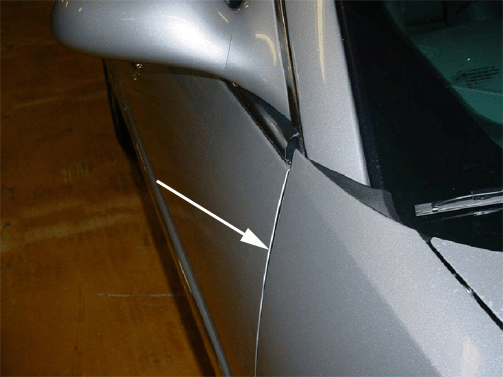
The front door may be outboard of the front fender.
Correction
Make sure the front fender is outboard of the leading edge of the front door. Adjust the front fender outboard of the door.
Condition #7
Wind noise or wind rush from the "B" pillar.
Cause
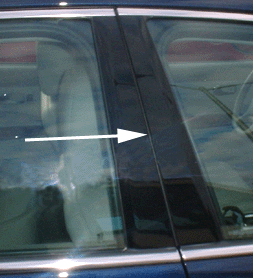
The door secondary seal may not be in contact with the front door.
Correction
Adjust the door for proper contact. Place a piece of paper (such as a dollar bill) on the seal and close the door. There should be a constant drag when pulling the paper between the seal and the door frame.
Condition #8
Wind noise or wind rush around the top of the door frame.
Cause
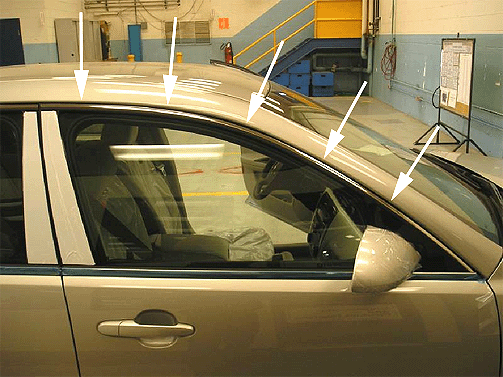
The door upper auxiliary seal may not be in contact with the body.
Correction
There should be no gap between the upper auxiliary seal and the body. Place a piece of paper (such as a dollar bill) on the auxiliary seal and close the door. There should be a constant drag when pulling the paper between the auxiliary seal and the body.
If the lip is bent in a local area, try a heat gun to straighten the lip out. Otherwise, the molding will have to be replaced. If the lip is not bent, refit the door by raising the door so the molding lip makes contact with the roof.
Condition #9
Wind noise or wind rush from the inner belt seal.
Cause

The inner belt seal may not be in contact with the door glass.
Correction
Check if it is due to a localized bulge in the door glass and replace glass if a bulge is present. Otherwise, try a heat gun on the inner belt molding lip. Replace inner belt molding if required.
Condition #10
Wind noise from the top front corner of the door frame.
Cause
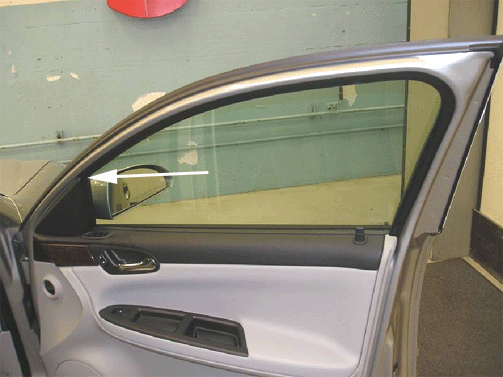

The window run channel seal may not be seated all the way.
Correction
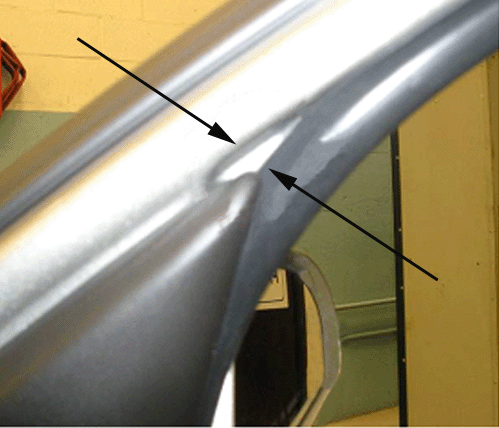
A visual check should confirm if there is a minimum of painted surface showing at the top of the mirror patch bezel. Push the seal firmly into the corner.
Allure/LaCrosse Wind Noise/Road Noise Conditions
Condition #1
Wind rush around the door appliques.
Cause

The door applique may not be seated all the way. The leading edge of the applique should not gap to the glass run channel seal.
Correction
Press on the applique in three locations (top, middle, bottom). There should be no click sounds. A click indicates that the tab on the applique was not fully seated into the clip on the reveal molding.
Condition #2
Wind rush from the hood to the grille.
Cause
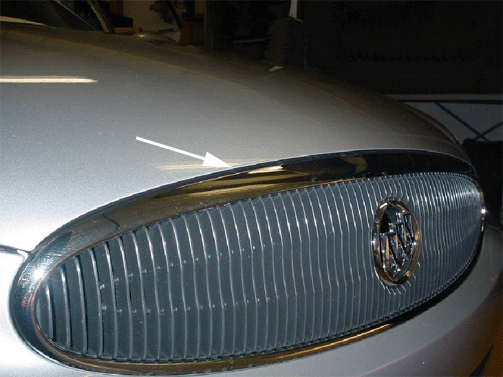
There may be too much gap between the hood and the grille.
Correction
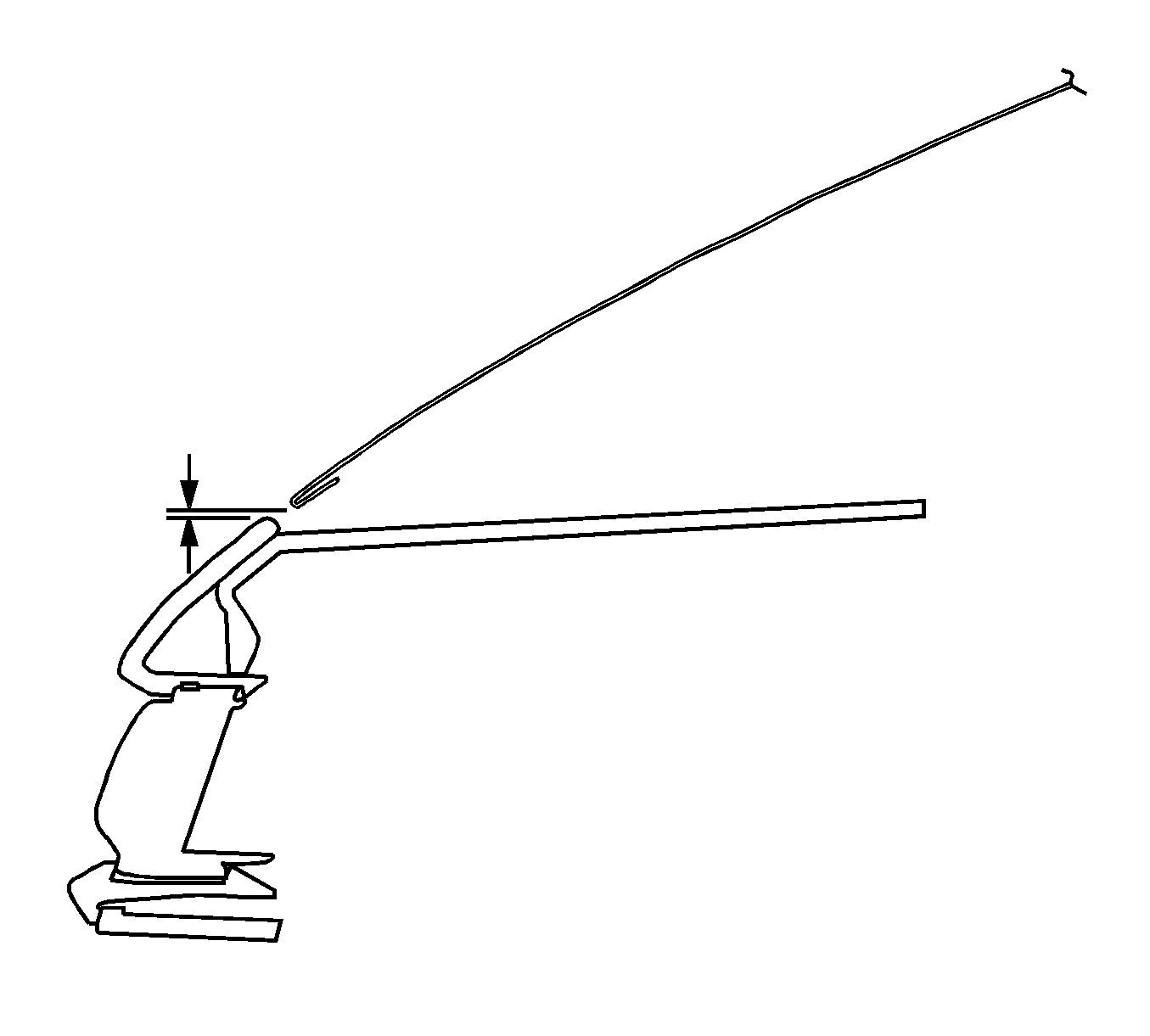
Refit the hood to ensure contact to the seal. There should be light contact between the hood seal and the hood.
Condition #3
Road noise or wind noise around the inner belt seal.
Cause
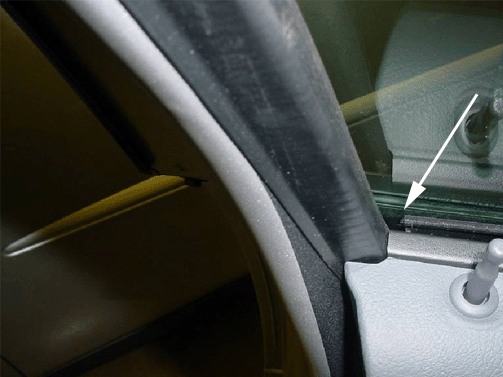
The inner belt seal may be installed too far forward or too far rearward. There should be no gap or hole between the run channel and the inner belt seal.
Correction
Remove the door trim panel and reposition the inner belt seal as necessary.
Condition #4
Wind noise around the window run channel seal.
Cause
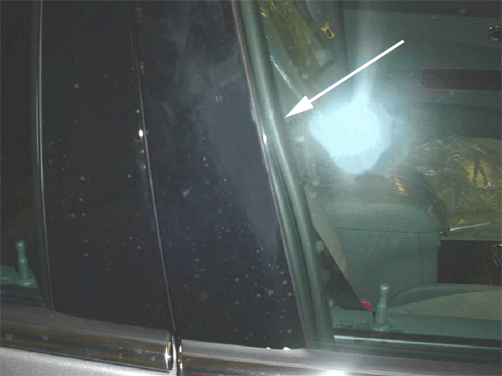
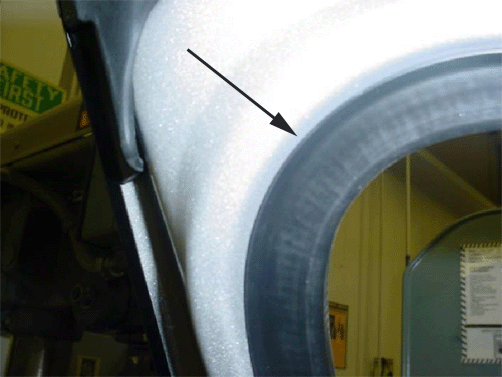
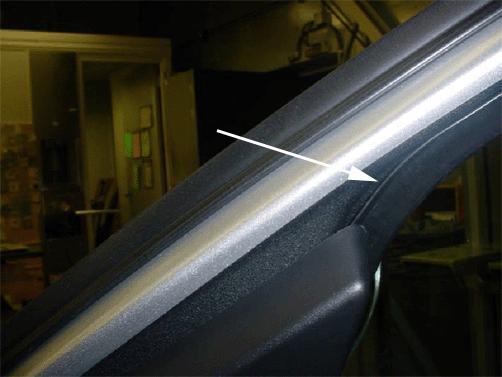
The run channel may not be seated all the way.
Correction
Fully seat the run channel to the door frame.
Condition #5
Wind rush from the wipers or the cowl panel.
Cause
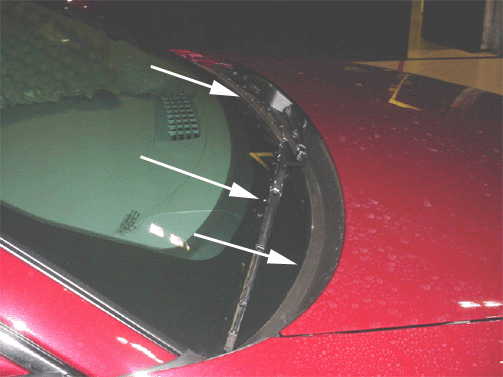
The wiper arms may not be installed low enough on the windshield or the cowl panel may not be seated to the windshield
Correction
Check to make sure the tip of the wiper blade is resting on the white or black dot on the windshield. The white dot will be a painted dot on the windshield and if the white dot is not present there will be a black dot in the windshield. If the cowl panel is not seated to the windshield check to make sure the clips on the underside of the cowl panel are under the windshield.
Condition #6
Wind noise or wind rush from the "B" pillar.
Cause
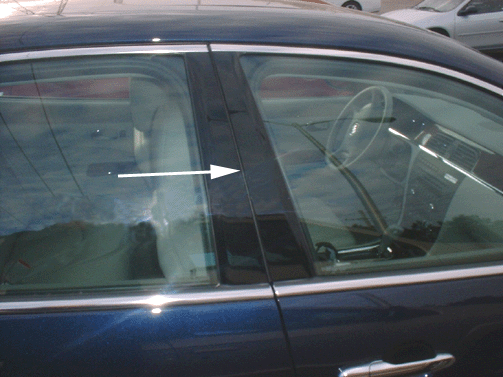
The door secondary seal may not be in contact with the front door.
Correction
Adjust the door for proper contact. Place a piece of paper (such as a dollar bill) on the seal and close the door. There should be a constant drag when pulling the paper between the seal and the door frame.
Condition #7
Wind rush from the front of the door.
Cause
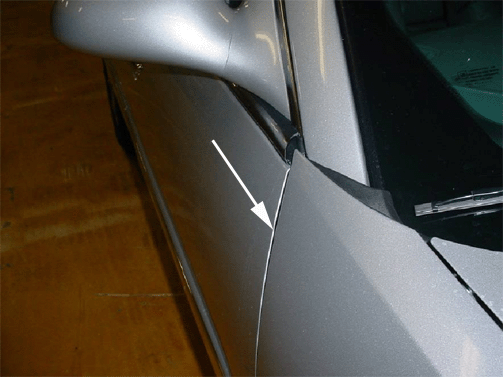
The front door may be outboard of the front fender.
Correction
Make sure the front fender is outboard of the leading edge of the front door. Adjust the front fender outboard of the door.
Condition #8
Wind noise or wind rush around the top of the door frame.
Cause
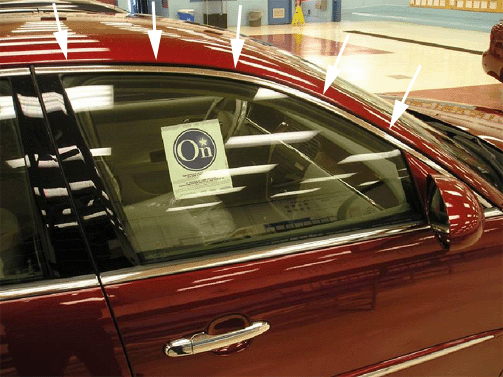
The door upper auxiliary seal may not be in contact with the body.
Correction
There should be no gap between the upper auxiliary seal and the body. Place a piece of paper (such as a dollar bill) on the auxiliary seal and close the door. There should be a constant drag when pulling the paper between the auxiliary seal and the body.
If the lip is bent in a local area, try a heat gun to straighten the lip out. Otherwise, the molding will have to be replaced. If the lip is not bent, refit the door by raising the door so the molding lip makes contact with the roof.
Condition #9
Wind noise or wind rush from the inner belt seal.
Cause
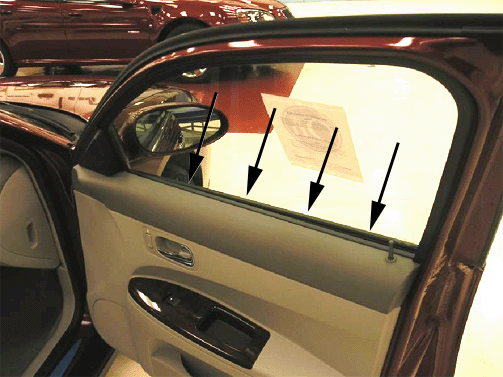
The inner belt seal may not be in contact with the door glass.
Correction
Check if it is due to a localized bulge in the door glass and replace the glass if a bulge is present. Otherwise, try a heat gun on the inner belt molding lip. Replace the inner belt molding if required.
